Fighting the dark side of wedding and event photography.
“…both our ceremony and reception is going to be outside at dusk and it is going to be lit entirely by fireflies. It’s going to be so romantic!” I’m sure wedding photographers reading this just chuckled, then cringed and cried a little bit. For everyone else, I swear this is not a suggestion. DON’T DO IT!
Thankfully, this is not a scenario we have yet encountered in our wedding photography, however it seems it might just be the next step right before lights out. And while darker settings might make for picturesque ceremonies and receptions for you and your guests, it is, ironically, anything but picturesque for the photographer and/or videographer.
First off, don’t take too much offense or feel terrible for going to the dark side. Mood lighting is much prettier than an event center lit with rows of fluorescent lights. And the conflict is not new: And any kind of motion-based event photography/videography are often at odds with one another in terms of portrait quality and true capture of the day.
Why is this? Simply put: Our eye (both physical and that of the mind) are far more sensitive, interpretive and advanced than any DSLR camera sensor/perspective. For a more in-depth, sciency look at what I am talking about, click here (CAMERAS VS. THE HUMAN EYE). From here, we will look at a common problem associated with events/weddings and how you might be able to help your photographer out, if even just a little bit.
Now picture the firefly idea above. Likely, our fictitious client is enamored with an idea of every wedding portrait looking something like this:

Unfortunately, the reality will look something more like this:
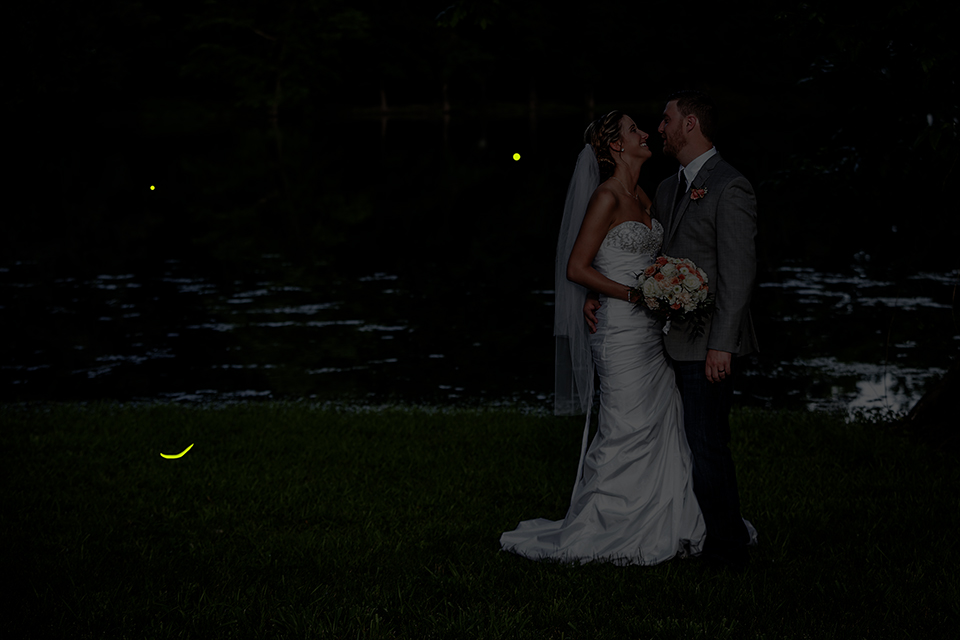
Or this:

Notice the complete lack of fireflies in the third photo, as a camera’s straight flash (necessary if you plan to see any of your guests in the dark) would easily overpower and drown out those little guys’ mild, green flashes. And this is to say nothing of the flash temporarily blinding folks who are visually adjusted to the dark and our complete imposition on the mood in general.
Like the Pinterest-esque (yet unrealistic) scenario above, many weddings, receptions and events I have photographed are set amidst very dim lighting. We’re talking lowest-point-on-the-dimmer-dial and tea light dim. While the bride and groom beam with pride describing their romantic, candle-lit reception, the photographer and/or videographer are often thinking of the lighting challenges facing them.
Truth be told most churches, banquet halls and event centers are not really set up for optimal photography…and for good reason. Anything short of stadium lighting is going to cause a photographer to speed up their ISO, open up their aperture and slow down their shutter, thereby sacrificing some photo quality to assure you still get the image. There is a reason the straight flash atop our cameras “blind” you. The camera needs a lot of light to be able to “see” and capture what it “sees”.
Now, you are saying “Patrick, this is a very interesting point and we were completely inconsiderate and heartless for not considering the photographer’s lighting needs during our wedding setting plans. What can we do to make our wedding better for the photographer?” Of course, I just naturally assume wedding planner is thinking this. Honestly, the answer is: Not much, but there is a little.
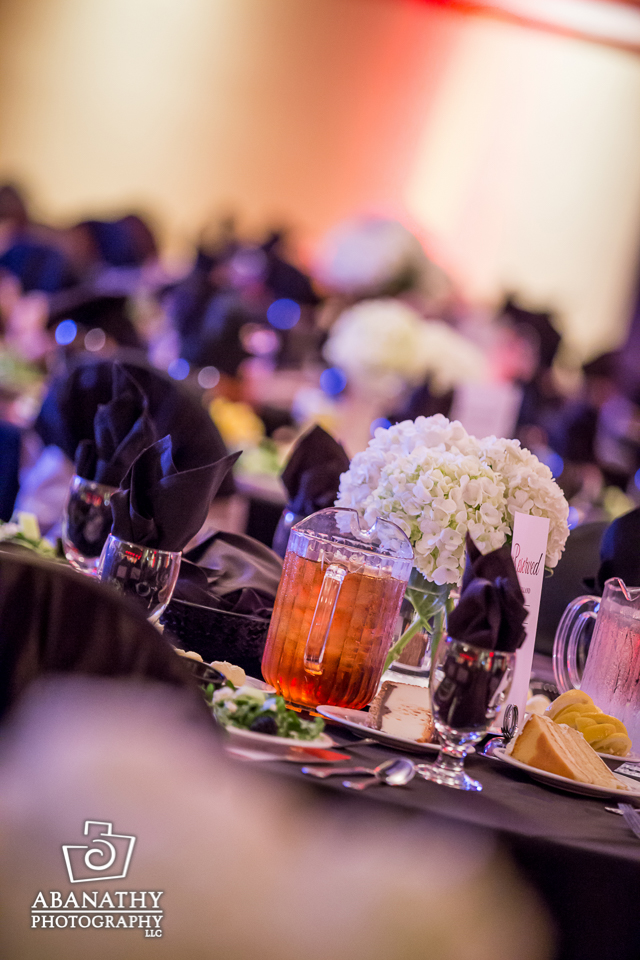
Capturing dinner events in the dim-light scenario is easy. The setup and mood are typically of inanimate objects, and, no matter how dim the lighting, most well-dressed guests do not mind a straight flash. Sure it is distracting, a bit blinding in near-dark banquet centers and is not always the most flattering light, but the food, drink and conversation easily win out as the photographer blends into the background spreading their portrait taking over a large group of people. But what if the focus is on a small group and a flash is either taboo or straight up not permitted? Let’s head to the alter.
Most indoor ceremonies I have photographed have one main issue: Dim lighting in the church. This is especially true of the aisle. Most couples want images of the parties walking in and, definitely, of the bride walking down the aisle. While this is a list topper for the wedding photographer as well, the lighting can be a huge deciding factor in how well these images turn out. Most of the time there are spotlights or other directed, enhancing illumination hitting the alter, but the aisle is often left to the mercy of ambient lighting, as to preserve the focused mood and cater to the eye’s ability to push past dim lighting in realtime.
This creates two problems: First, the dim lighting requires a higher ISO setting and wider aperture on the camera. This in-turn creates more digital noise and room for focal plane issues. Second, and more importantly, this can cause the lens to have trouble with focus. Unlike our eyes, the camera lens relies on light to “see” during focus. Without decent lighting, it could focus incorrectly or give false readings. It gets a bit technical, I know, so let’s just say dim lighting works against picture quality.
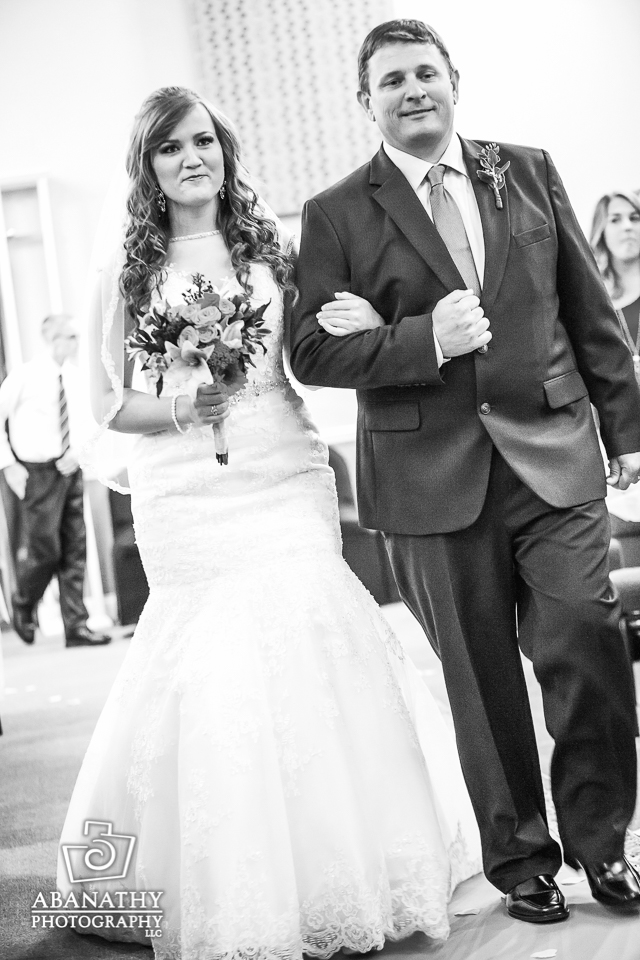
The only true answer to this would be to use a flash during the ceremony. Not only is this frowned upon and very distracting, but it will more than likely ruin your ceremony portraits in terms of capturing the mood. I would rather push my camera to the point of TV-static grade digital noise than use a flash at the alter. So, while I never say “never”, I’m not going to say “OK” either.
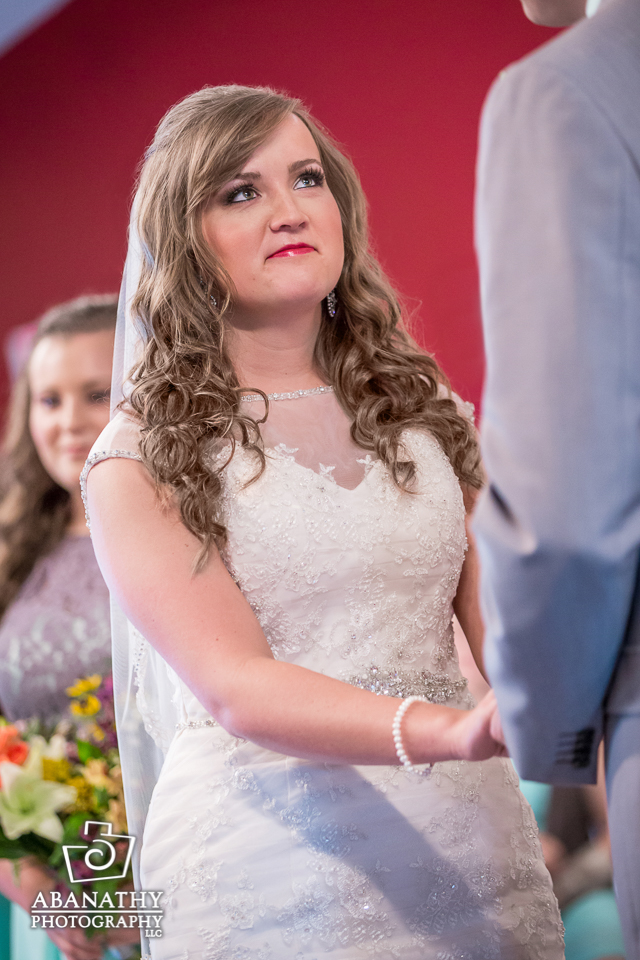
Outdoor weddings pose a similar concern when held too close to sunset. Especially as many outdoor weddings take place under tents, arches, in gazebos or under other light blocking structures. In the middle of summer, daylight tends to hold out well into the evening giving plenty of time to capture the ceremony and group portraits. However, some weddings take place in the late fall when the sun begins setting at 6. While a 5 p.m. outdoor ceremony in October might seem ideal for many reasons, it can be challenging for photographers.

But didn’t I say something about helping the photographer out a little bit? Well, there are things the wedding planner can do.

For indoor weddings, simply give me your brightest light possible in areas of interest. I often have folks ask if they can turn on some extra lights to help me out. Honestly, they could turn on every light in the room and it will not make much of a difference…unless they are brighter. Like I said before, stadium lighting would be required to get the ideal settings on my camera. However, as you don’t want your guests permanently blinded following your ceremony, we’ll just take the brightest lighting you can give us. If your ambient lights have dimmers, max them out while the parties are walking in and out. That extra little bit of brightness won’t allow me to use ideal ISO and aperture, but it could make the difference between upper-limit ISO and please-let-the-portrait-gods-shine-favorably-upon-me ISO. Also, that extra little bit will likely let the camera’s focus “see” better and take a load of stress off of the photographer as the parties and bride walk in.

For outdoor weddings, simply consider the time of day. While you don’t want your guests melting in midday sun, you don’t want your ceremony becoming increasingly darker with every vow. Check your seasonal sunsets, know some outdoor portraits will have to take place after the ceremony and know most photographers would rather not use a flash or even ask permission to do so during your ceremony.
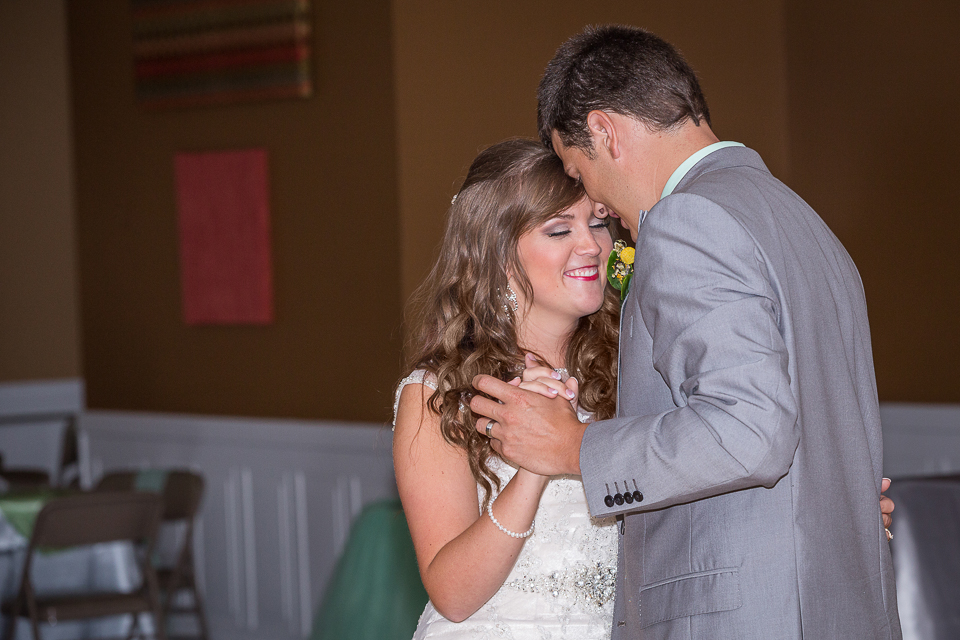
At the reception is where there is a bit more wiggle room. With that, we want your event to be what you, the client, wants. Just be aware even the high-end cameras, unlike our amazing, human eyes, have limits in dim lighting and the photographer has to work within these limits and with equipment designed to overcome these limits to deliver your portraits in the best way possible.
Of course, the best times to address any big day questions is long before the banquet hall is booked and the programs are printed. So, don’t hesitate to discuss your wedding setup with your photographer and/or videographer well in advance. Many are glad to offer advice and work with you to make sure they capture your wedding just the way you want it.